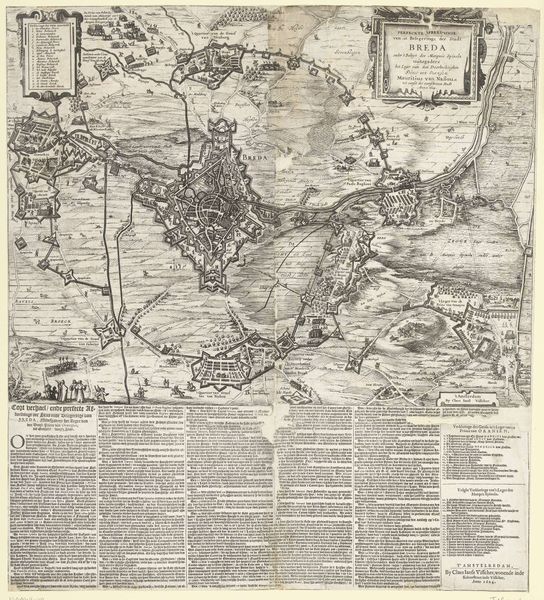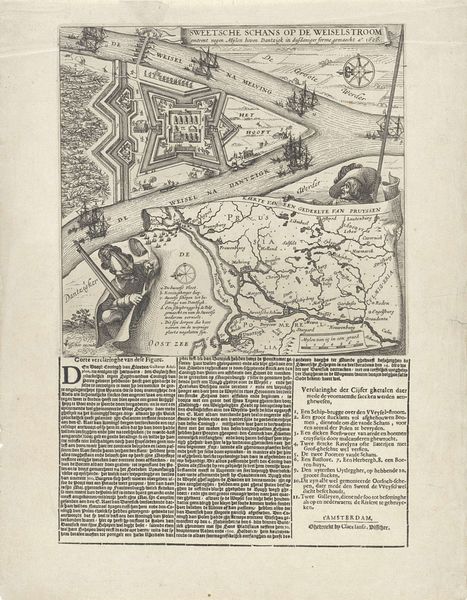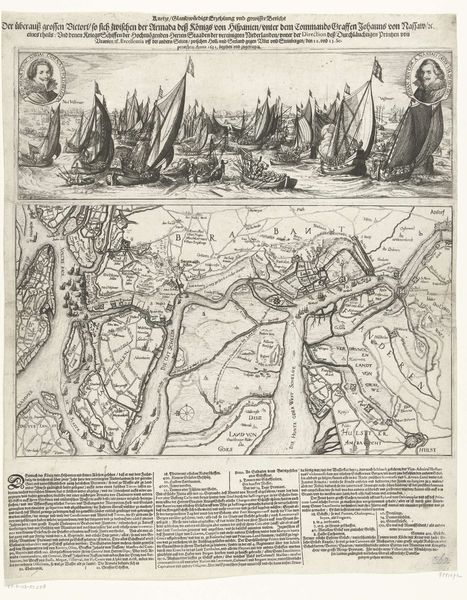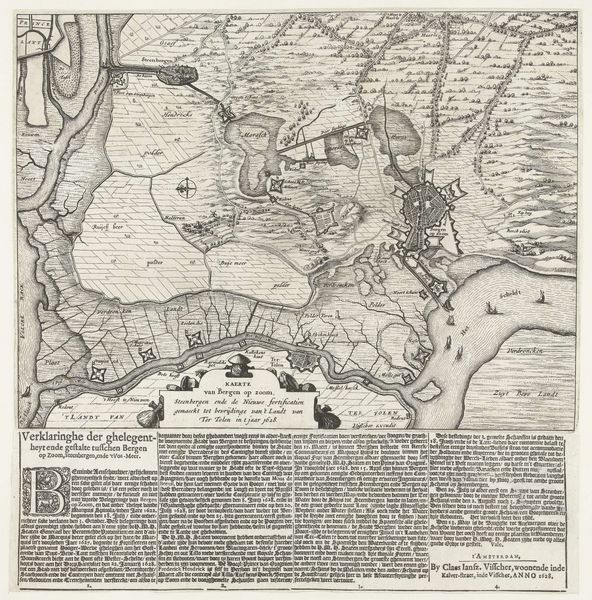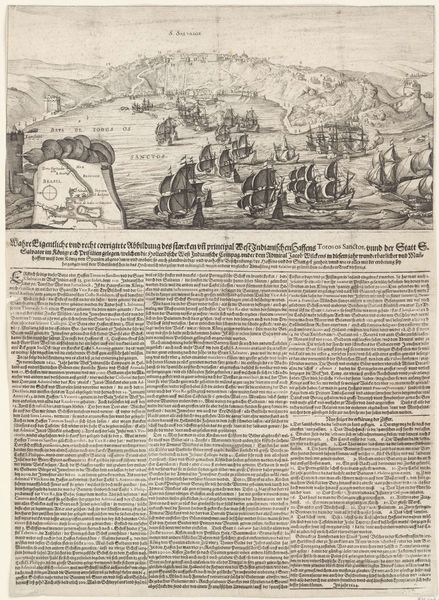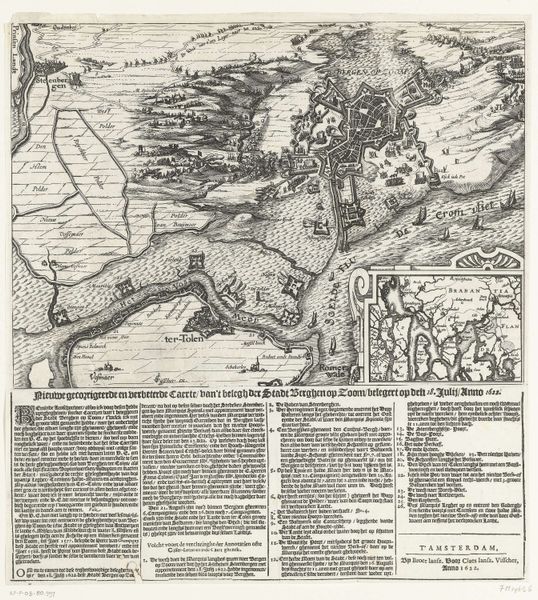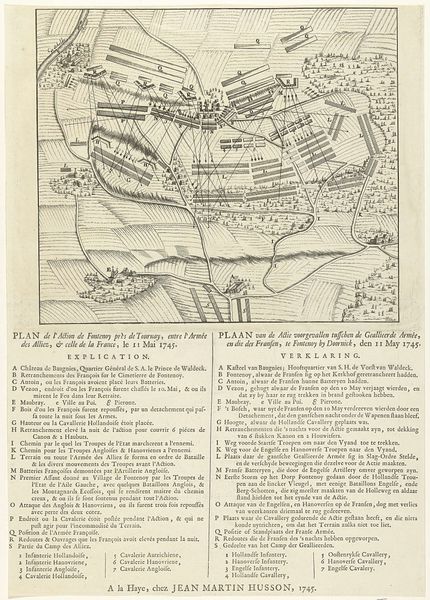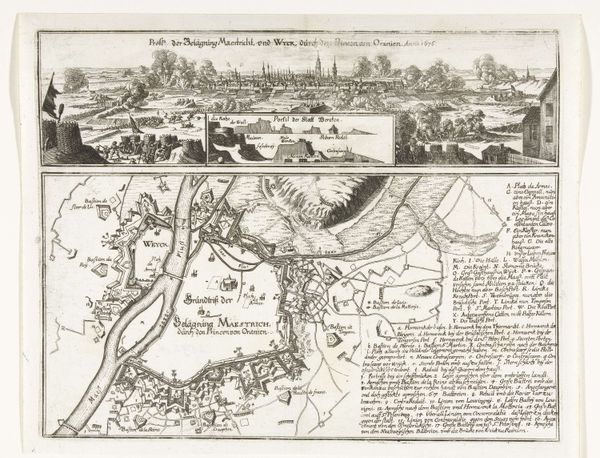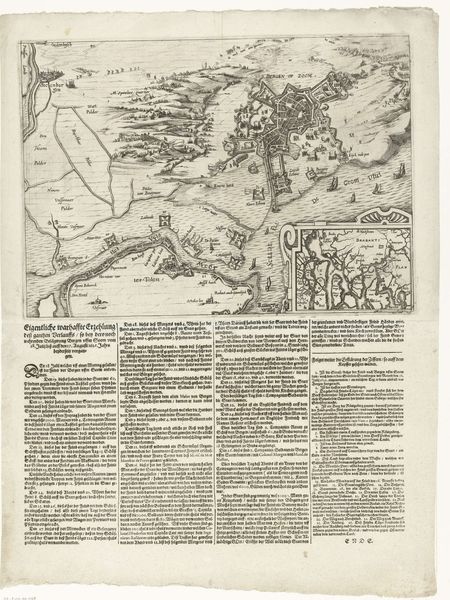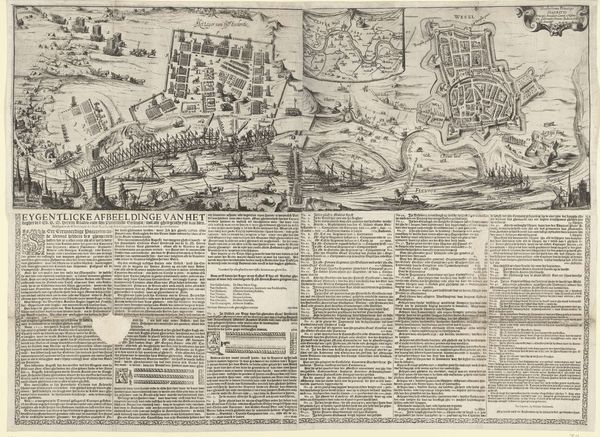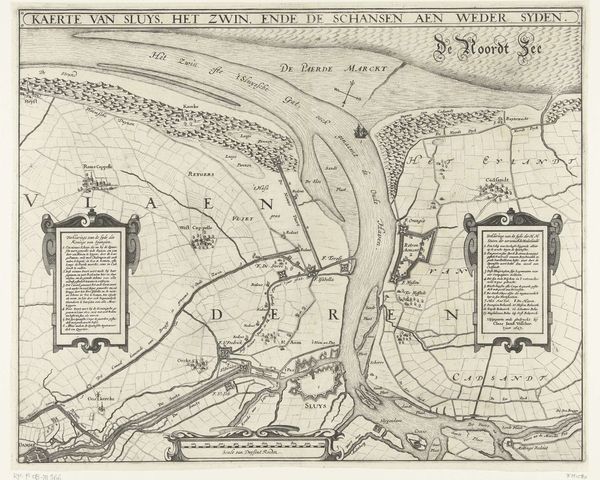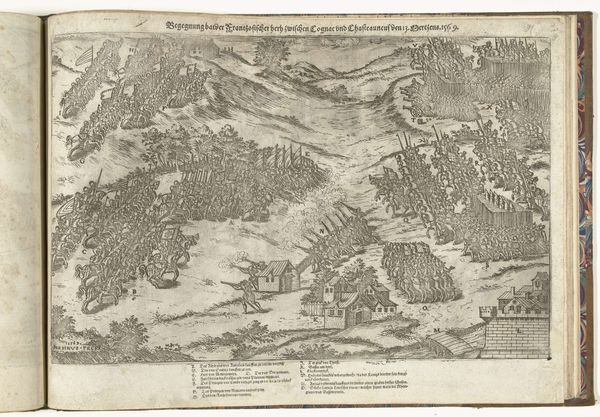
graphic-art, print, engraving
#
graphic-art
#
dutch-golden-age
# print
#
pen sketch
#
landscape
#
cityscape
#
engraving
Dimensions: height 370 mm, width 355 mm
Copyright: Rijks Museum: Open Domain
Curator: This detailed engraving from 1622 by Claes Jansz. Visscher depicts the siege of Bergen op Zoom during the Dutch Golden Age. My first impression is the sheer density of information conveyed. It's a fascinating blend of topographical accuracy and symbolic representation. Editor: What strikes me is the painstaking labor that went into producing this print. The intricate lines, the texture of the paper – it all speaks to a specific workshop practice. Look at how the cityscape becomes almost an abstract pattern. Curator: Indeed. Visscher employs a highly structured composition, dividing the landscape into distinct planes to guide the viewer’s eye. The upper register presents an expansive view, while the lower section features text providing commentary on the events. Semiotically, the fortified city in the upper right functions as a symbol of Dutch resistance. Editor: The materials tell a story too. Copper engraving was a well-established medium, but this artist utilized it for very detailed news production that spoke directly to local consumption patterns. It's less a fine art object and more of a crucial informational tool from a period of intense military action. Curator: However, consider the artistry with which the information is presented. The formal rendering of the city walls, the calculated placement of text blocks – all these elements contribute to a visual harmony that transcends mere reportage. There’s an undeniable aesthetic intention here. Editor: Perhaps, but the "aesthetic" is rooted in its functionality. It had to be visually engaging and clearly communicate to a wide audience invested in these battles. It blurs the boundaries between high art and mass communication, suggesting an artist directly participating in and commenting on societal change. Curator: A persuasive perspective. By focusing on the material production and historical context, we gain insights into the intricate interplay of art, labor, and society. Editor: Exactly. And in considering Visscher’s artistic choices within these social and historical circumstances, we avoid creating art-historical separation of production from consumption. Curator: Thank you. The integration of your emphasis on labor and production allows a fuller understanding. Editor: Likewise; understanding its visual rhetoric adds another layer to my understanding of its functionality.
Comments
No comments
Be the first to comment and join the conversation on the ultimate creative platform.
